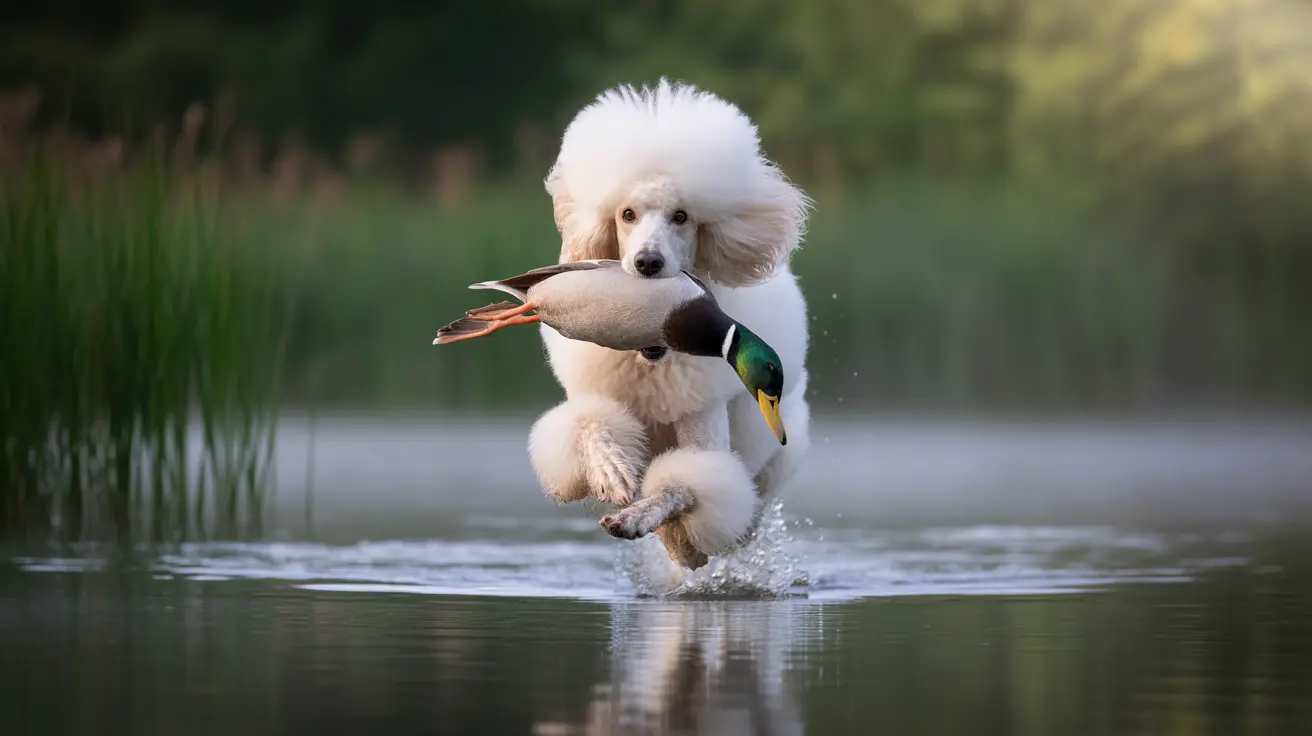When you see a perfectly groomed Poodle strutting down the street today, you might not immediately think "working dog." However, these elegant canines were originally bred for a very specific and demanding purpose. Let's dive into the fascinating history of Poodles and discover their original breeding purpose, which might surprise many modern dog lovers.
From their German origins to their evolution into one of the world's most versatile and intelligent dog breeds, Poodles have a rich history that spans centuries of working alongside humans in various capacities. Their journey from water retrievers to beloved companions is a testament to their remarkable adaptability and intelligence.
Origins of the Poodle Breed
Despite their strong association with French culture, Poodles actually originated in Germany during the Middle Ages. The breed's name derives from the German word "Pudelin," meaning "to splash in water," which directly relates to their original purpose. In France, they became known as "Caniche," from the word "canard" (duck), further emphasizing their water-working heritage.
Early Poodles were developed from various European water dogs, including the now-extinct Barbet and possibly some Asian herding breeds. These ancestral connections helped shape the Poodle's distinctive characteristics, particularly their water-resistant coat and strong swimming abilities.
Original Purpose and Working Heritage
Poodles were primarily bred as water retrievers, specifically for duck hunting. Their exceptional swimming abilities, coupled with their intelligence and trainability, made them invaluable companions for hunters working near lakes and rivers. These dogs would dive into cold water to retrieve fallen waterfowl, their moisture-resistant coats protecting them from the elements.
The famous "Poodle clip" that we know today wasn't originally about aesthetics. This distinctive grooming style served a practical purpose: the longer hair protected vital organs and joints from cold water, while the shaved portions reduced drag while swimming. The pompoms were strategically placed to protect the dog's joints and chest during extended periods in cold water.
Evolution into Multiple Roles
As their reputation for intelligence and versatility grew, Poodles began taking on various other roles. The Standard Poodle, being the original size, continued its work as a retriever, while smaller varieties were developed for specific purposes:
- Standard Poodles: Hunting, military work, and guard duties
- Miniature Poodles: Truffle hunting and performance work
- Toy Poodles: Companionship and circus entertainment
Their adaptability led to roles in circus performances, military operations, and even truffle hunting, where their keen sense of smell and gentle paw work made them excellent at locating and carefully digging up valuable fungi.
Modern Poodle Characteristics
Today's Poodles retain many of the characteristics that made them excellent working dogs. Their high intelligence, ranked among the top three of all dog breeds, makes them highly trainable and capable of learning complex commands. Their hypoallergenic coat continues to be a prized trait, though now more for allergy sufferers than water resistance.
While most modern Poodles live as companion animals, some still participate in hunting trials and water work, proving that their original breeding purpose remains relevant even centuries later.
Frequently Asked Questions
What were poodles originally bred for, and how did their hunting skills develop?
Poodles were originally bred as water retrievers for hunting waterfowl. Their hunting skills developed through selective breeding for traits like swimming ability, intelligence, and trainability. Their water-resistant coat and natural retrieving instincts made them excellent at recovering downed birds from cold water.
How does the traditional poodle grooming style relate to their water-retrieving work?
The traditional poodle clip was functional rather than decorative. Longer hair was left on joints and vital organs for protection from cold water, while other areas were clipped short to reduce drag while swimming. The pompoms weren't for show but served as insulation for critical areas of the dog's body.
Why are poodles considered excellent swimmers and waterfowl retrievers?
Poodles excel at swimming due to their athletic build, water-resistant coat, and natural swimming instincts. Their intelligence and trainability make them exceptional at following commands and retrieving games, while their stamina allows them to work in water for extended periods.
How did poodles evolve into different sizes like Standard, Miniature, and Toy, and what roles did each size serve?
The Standard Poodle is the original size, bred for hunting. Miniature Poodles were developed for more specialized work like truffle hunting, while Toy Poodles were bred primarily as companions. Each size maintains the breed's intelligence and working capabilities, just in different proportions.
In what other jobs besides hunting have poodles historically been used?
Beyond hunting, Poodles have served as military dogs, circus performers, guide dogs, and truffle hunters. Their versatility and intelligence have allowed them to excel in various roles, from service work to therapy dogs, and even as performers in shows and competitions.






